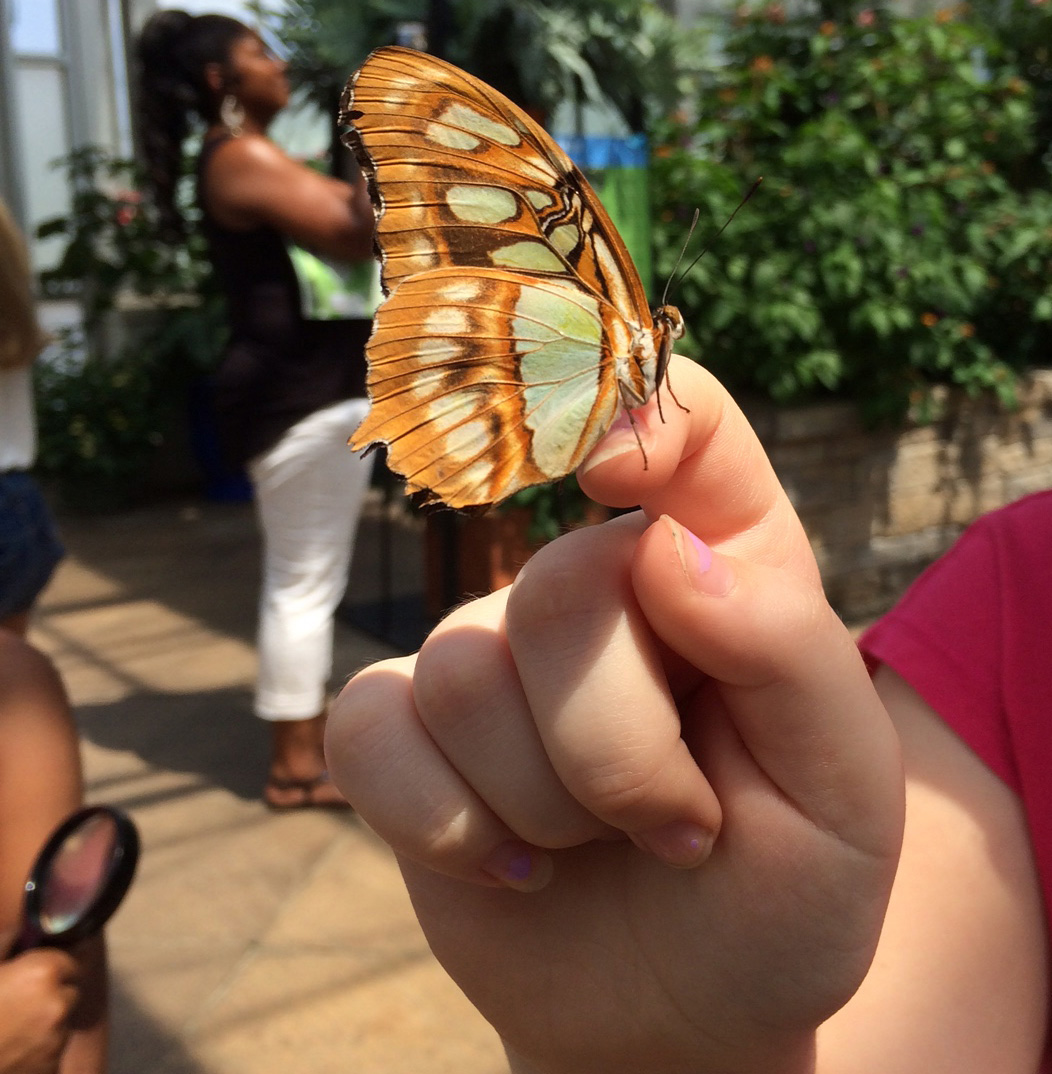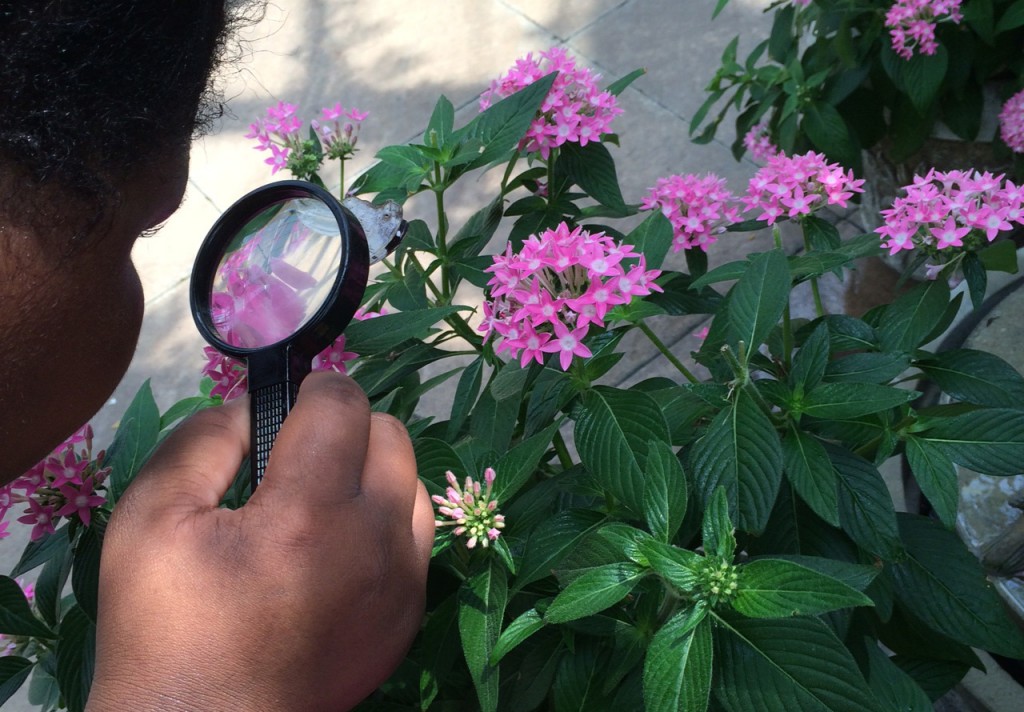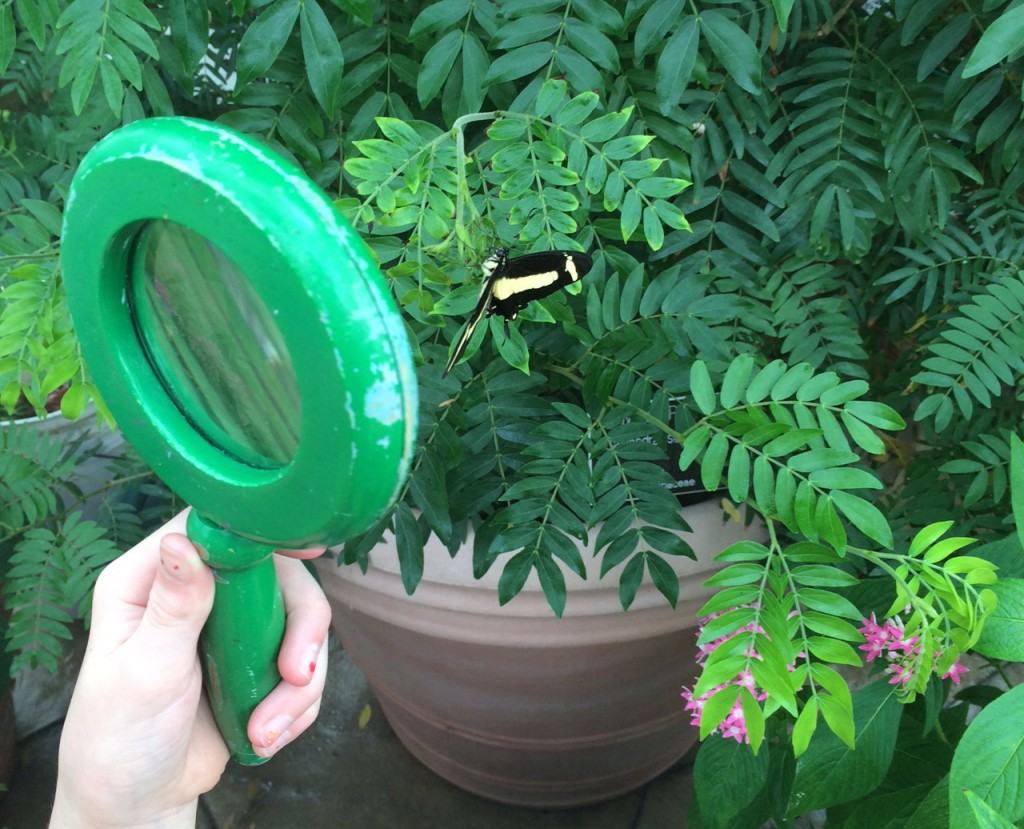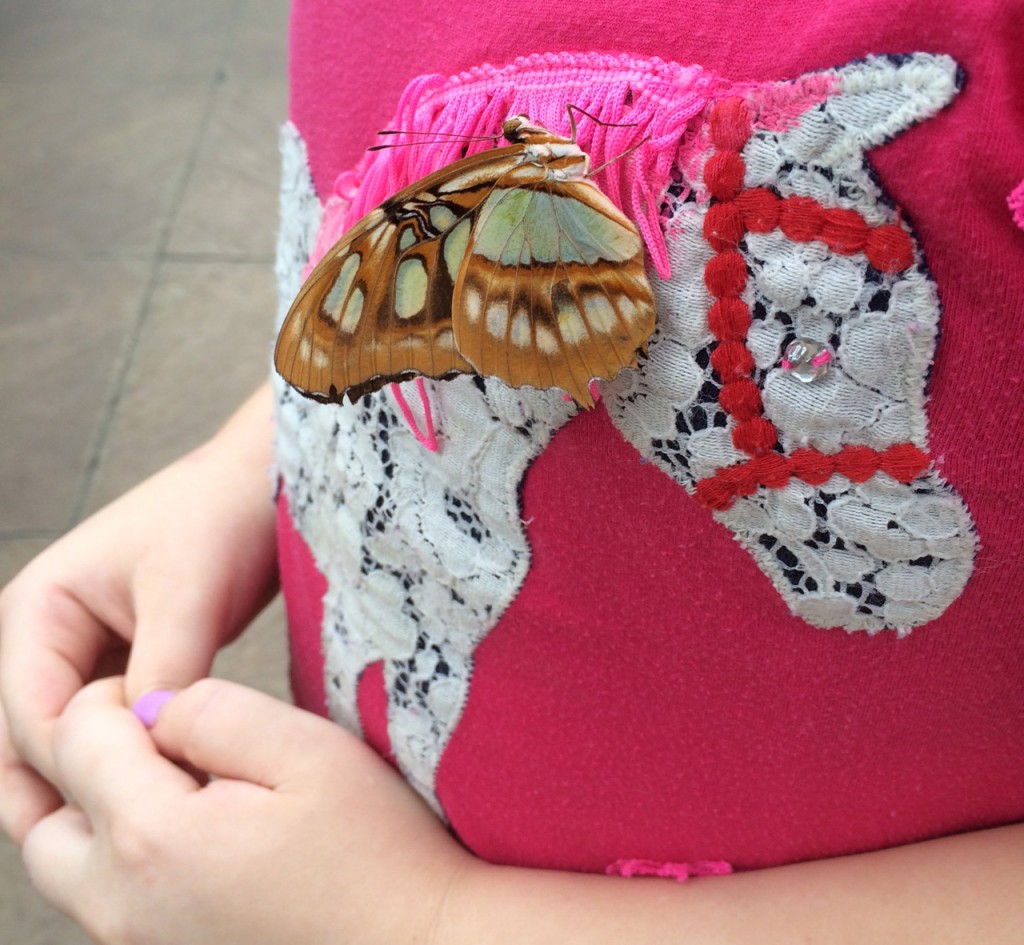Butterfly Kisses
Do you know what a butterfly kiss is? Butterfly kisses are when you gently flutter your eyelids against another person’s check or arm. It tickles, and feels a bit like butterfly wings on your skin. As you can see, it’s not something you can explain easily to a child. You just have to show them. And what a tender moment it is when you do!
This summer I got to observe a child’s first butterfly kiss, and, fittingly, it took place in the Butterflies LIVE! exhibit. It’s rare that one gets to witness such an encounter. Here at Lewis Ginter Botanical Garden we observe a generous share of moments that are touching. But this was a remarkable experience because the children learning about butterfly kisses were a very special group of kids. They are survivors or witnesses to domestic violence or sexual abuse. And the person teaching them about butterfly kisses was not a parent, or a grandparent, but Kate Hanger, Prevention Education Coordinator, for nonprofit Project Hope at Quin Rivers. The elementary-aged group visited the Garden as part of our Sharing the Garden program. And butterfly kisses require a gentle touch, in contrast to the physical violence that these children know.
For these children, not only was it their first trip to Butterflies LIVE!, but part of a special 2 week-long camp where they spent their days surrounded by people who understand what they’ve been through. All campers in the program have had similar experiences and sometimes there’s a silent understanding and acceptance that comes from just being around people who know the same pain and trauma that you know. Camp counselors are trained social workers, case managers and experts in the care of children who’ve experienced this kind of trauma. Some of them grew up in similar situations.
“This group is in it. Some of them are at the height of it,” explains Counselor Chris Napier. “To give them this reprieve [of a day at the Garden] is therapeutic in and of itself. They’re here. They’re learning. They aren’t worried about where their next meal is coming from right now.”
Many kids come to Project Hope through the court system or are referred by social services, the school guidance counselor or principals. Others have a friend or neighbors that have told them about it.
The delight and exuberance these children expressed was typical of any child we see in the Garden, but there was an undercurrent of sensitivity, sadness and hesitation. It was unspoken, but as a child who grew up with domestic violence myself, I could empathize with the shame, with the questioning of self and the feeling of being different. It was a heaviness I immediately felt.
I asked Napier what makes this program important for these kids, “There’s a focus on educational opportunities that aren’t so obvious. For example, some of these kids haven’t been out of their neighborhood or community before.”
The conversations between the kids and camp counselors illustrated a strong rapport with the kids, and of course, love.
“Kate is super motherly and a lot of them flock to her,” Napier explains of his colleague. The children were excited to share each tiny adventure, anything they loved, every new thing with her.
For example when a malachite butterfly “hitchhiker” landed on one camper, Lilac, and wouldn’t let go, Hanger teased,”If she won’t let go of you you’ll have to stay here!”
Camper Lilac replied, “O.K.”
Hanger said, “We’ll have to make you a tour guide [for the Butterflies LIVE! exhibit].”
Camper Lilac replied, “O.K. … Anyway, who would want to get off of a horse, especially a pink one?”, referring to the applique on her shirt. “I mean who would want to get off a pink pony. I mean seriously!”
One second later Lilac’s passenger had a name.
“Her name is Crystal because on the back of her wings it looks like an green crystal.” But the best part of the visit? “Just seeing the butterflies flying past you and jumping on you,” Lilac said.
“We want them to have fun, Hanger explains, “Being able to play with kids who are in similar circumstances at home, and having a set routine is really important.”
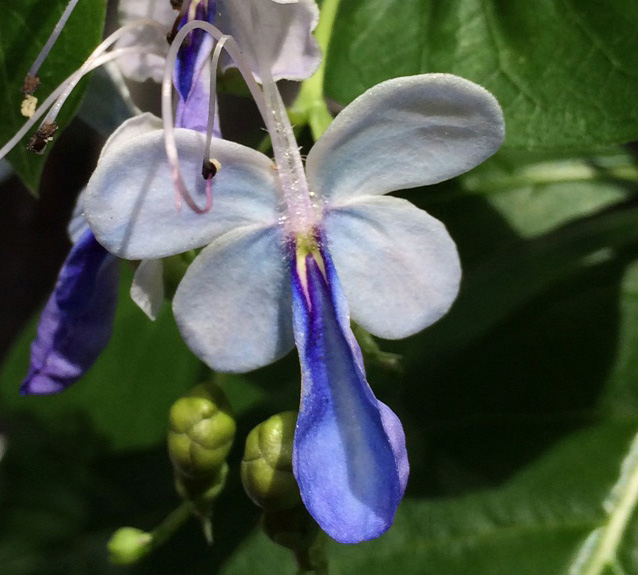
The kids learned about Clerodendrum ugandense or blue butterfly bush — a plant that looks like butterflies AND attracts butterflies!
“We wear alot of different hats because in the area where we are, we are the only service program, so they count on us for alot of different services,” explained Napier. “We’re trying to get [the students’ elementary] school faculty more involved and trying to educate them about red flags to look for in the kids that they work with: being withdrawn, hungry or falling asleep in class.”
Many of these kids will continue to experience difficult situations at home. There is no quick fix. However, experiences like the one at the Garden give these kids a chance to be kids, to run, to play, to marvel at the natural world, and to giggle at the sensation of a first butterfly kiss. On this day that some very special children learned about butterfly kisses. Hopefully it’s a day that they will remember for a long time to come. I asked camper Samantha what the favorite part of the visit was for her. She replied without hesitation, “When the butterflies get stuck to you. One gave me a butterfly kiss!”
“Hopefully we are planting seeds for them for their future,” said Napier.
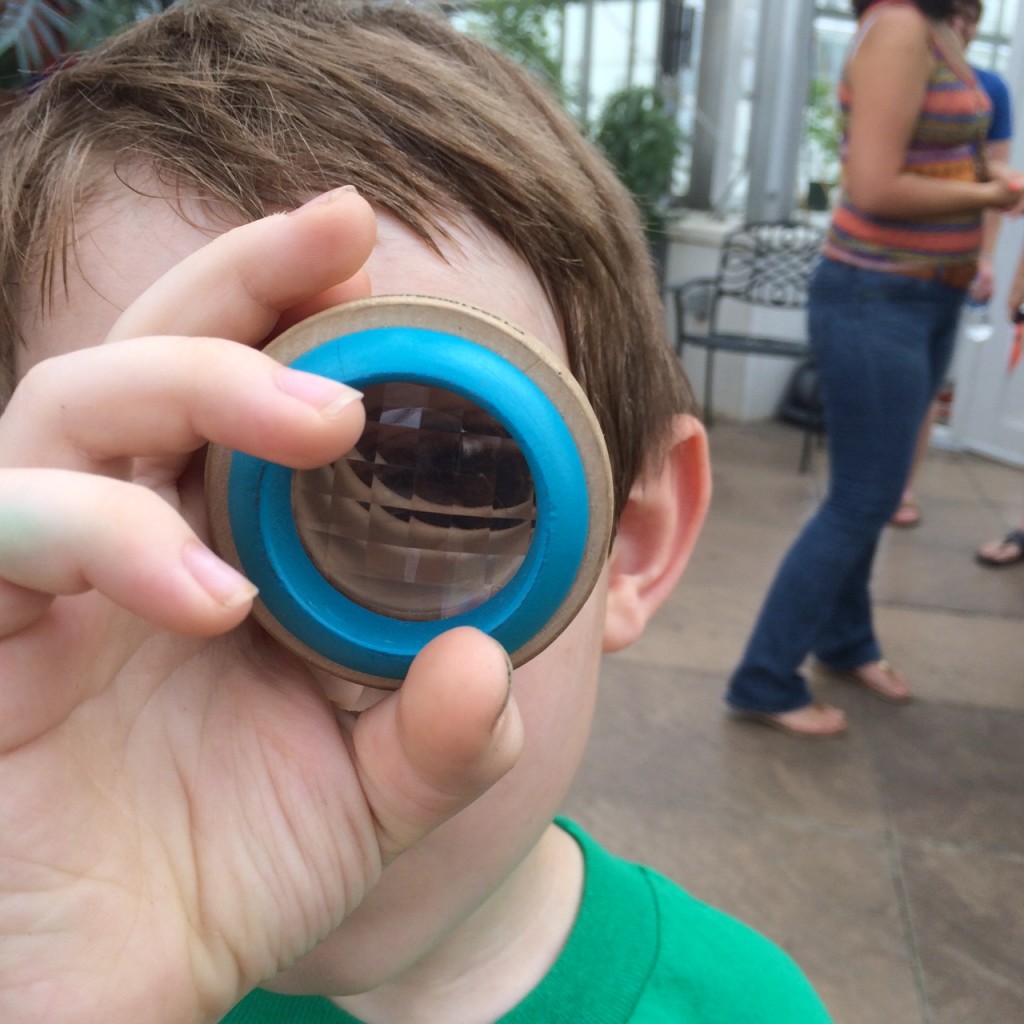
See like a butterfly sees: Looking through a device that replicates the way a butterfly sees with compound eyes.
Editor’s Note: All of the names of the children in Project Hope’s R.E.A.L. Kids camp have been changed to protect their identity. Sharing the Garden is a program that offer free admission for thousands of people who otherwise couldn’t afford to visit the Garden.
